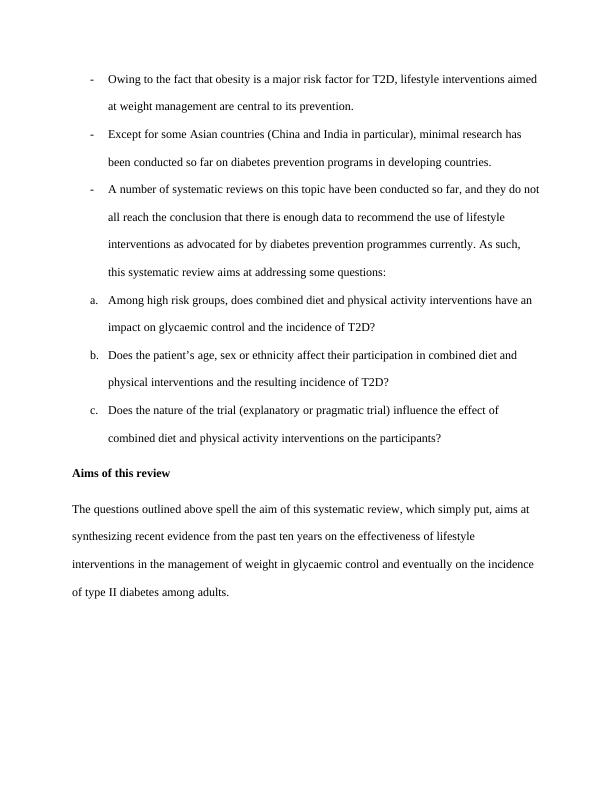Effectiveness of Lifestyle Interventions in the Prevention of Type 2 Diabetes
Added on 2021-04-21
14 Pages3411 Words81 Views
End of preview
Want to access all the pages? Upload your documents or become a member.
Long-Term Effectiveness of a Lifestyle Intervention for the Primary Prevention of Type 2 Diabetes
|7
|1841
|368
Impact of Fat Diet in Prevention of Diabetes
|16
|3833
|91
Interventions for Diabetes in Older Adults: Physical Activity and Nutritional Control
|11
|3083
|268
Culturally Targeted Interventions for South Asian Populations: to delay the onset or for improved management of Type 2 Diabetes
|78
|24322
|108
Role of Mediterranean Diet in Diabetes Management
|9
|2367
|42
Behavioural strategies to encourage dietary change in primary school aged children to prevent obesity
|14
|5813
|3




